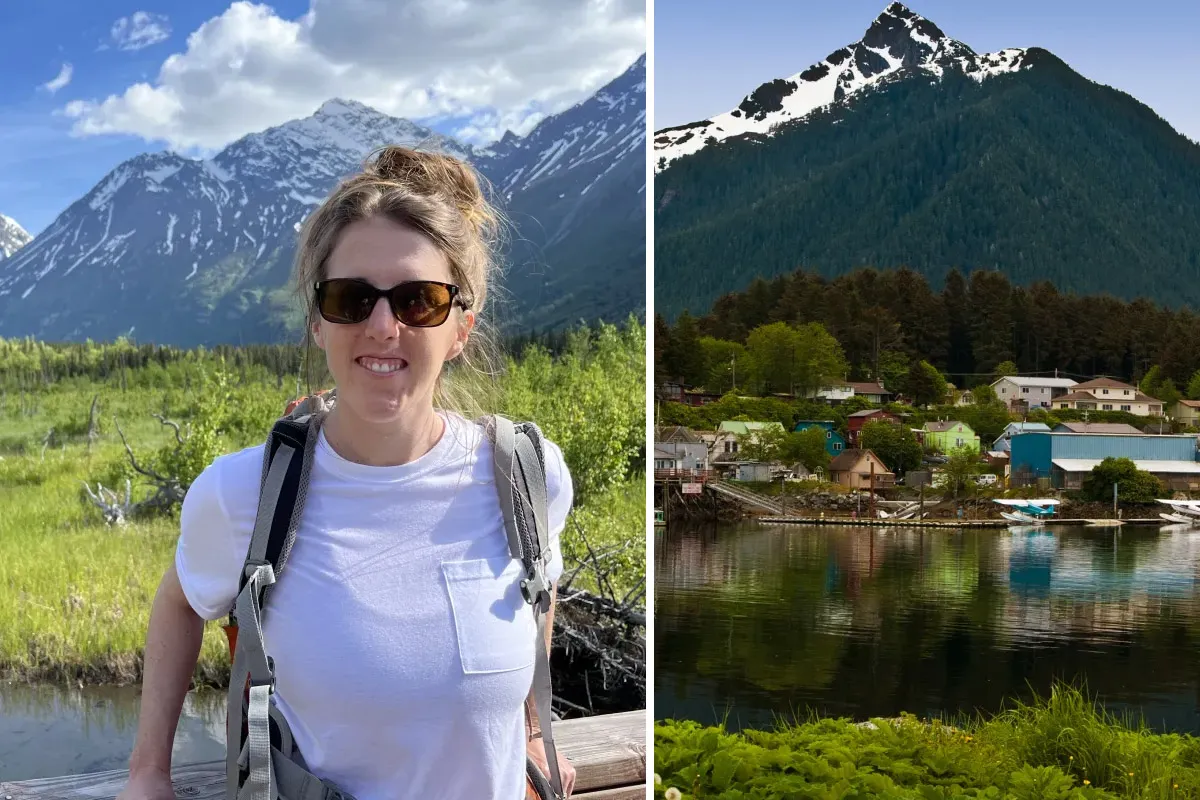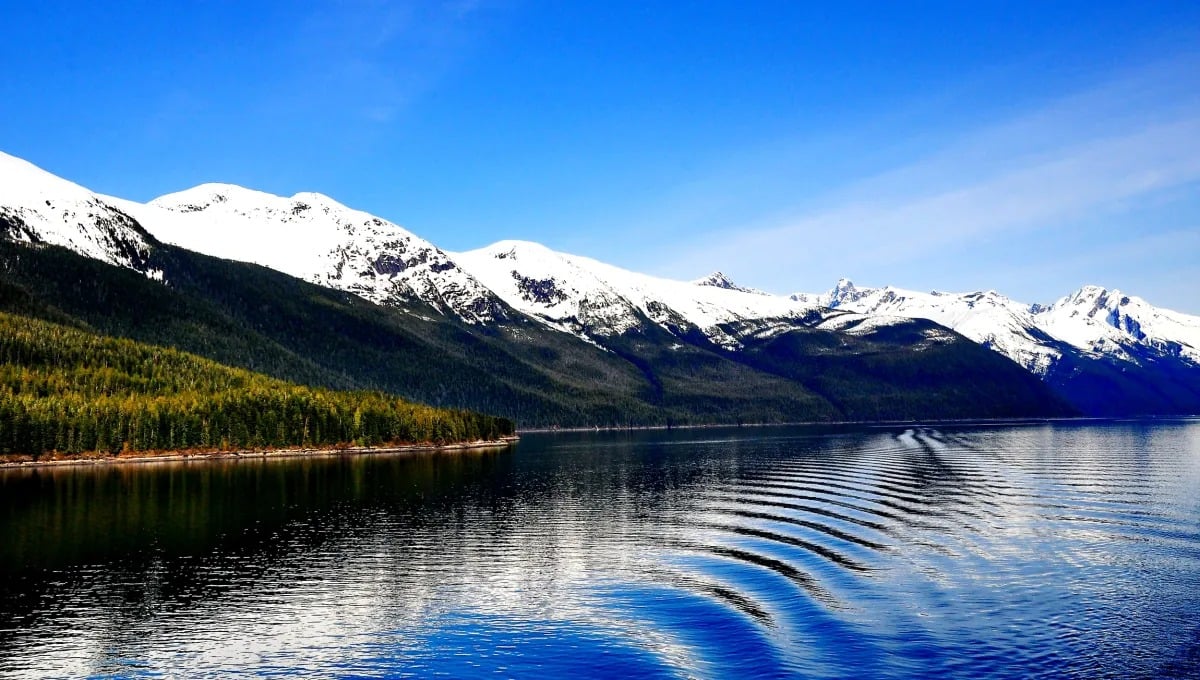
I'm an Alaskan by choice, not by birth. Several years ago, I fell deeply in love with The Last Frontier and decided to make it my home. But in my initial years, I was very much still a tourist – eager, awestruck, and occasionally, a bit too naive.
Yes, I've taken that selfie a tad too close to a moose, and I've definitely spent way too many nights shivering my tent after my trusty raingear failed me. I've learned the nuances of Alaska the hard way, but my love for Alaska has only deepened through my missteps.
Through this guide, I hope to share both my passion for this wondrous land and some gentle advice, helping you prepare for your trip by going through what not to do while you’re here!
Don't approach the wildlife
Alaskan animals are as majestic as they are wild. While witnessing a grizzly bear or spotting a moose is a thrilling experience, maintaining a respectful distance is crucial. Animals can perceive humans as threats, especially when protecting their young, leading to potentially dangerous encounters. If you spot wildlife on the road, pull over to the shoulder, put on your hazards, and remain in your vehicle.
Avoid feeding the animals
Beyond the potential risks to humans, feeding wildlife can harm the animals, making them dependent on human food or leading them into areas populated by humans. It's essential for their survival that they maintain their natural foraging habits. So, keep food securely packed away at all times, and don’t throw a sandwich to that baby bear – no matter how cute they may be!
Don’t forget to prepare for the cold
Alaska's climate is as varied as its landscapes. Even in summertime, one might encounter biting cold, especially in areas of higher altitude or near glacier-fed waters. Layering isn't just a fashion choice; it's a necessity.
Avoid littering
One of the great appeals of Alaska is its pristine environment. Littering tarnishes this beauty and can harm local ecosystems. A cardinal rule for travelers? Leave no trace.
Don't rely solely on your GPS
In this sprawling state, many areas lack reliable cellular coverage. Before heading off the beaten track, inform someone of your route and ensure you have a traditional map or compass at hand.
Don’t forget the bug spray and bug net
Alaska's mosquito population is notorious. Their numbers, especially in swampy areas, can be overwhelming. Come prepared with repellents and proper bug netting to ensure your adventure isn’t spoiled by these pesky insects.
Avoid venturing off marked trails
Alaska’s wilderness can be deceptive, and what seems like a short detour can turn into a perilous journey. Sticking to marked trails ensures your safety, preserves the surrounding environment, and reduces the chance of you surprising wildlife (definitely not recommended in bear country).
Don’t just stick to the popular spots
Alaska brims with hidden gems. Consider exploring towns like Talkeetna for its rich history or Kodiak Island for its stunning vistas. Engage with locals to get personal recommendations and try not to just follow what you see on Instagram. This entire state has amazing places to offer!
Avoid loud noises or yelling in wildlife areas
While it's exciting to spot wildlife, it's important to minimize disturbances. This maintains the animals' natural behavior and avoids potential conflicts, especially in bear territory. If you do encounter a bear, speak calmly to the bear as you slowly back away and get off the trail. Never run from any wildlife, as it can trigger a natural instinct to chase you (including bears).
Don’t overestimate your abilities
Alaska’s terrains can be demanding. Whether you're trying ice-climbing, white-water rafting, or even extended hiking, it's essential to be realistic about your capabilities. Double check with any tours to see if they have a recommended agility level and ask locals about nearby trails that may be best for your traveling party.
Avoid going solo on remote adventures
The allure of solo exploration can be strong, but the remoteness of Alaska can also be unforgiving. Having a buddy system ensures safety in case of unexpected challenges or wildlife encounters. Always try to hike in groups of three or more, or stick to more popular areas if you are alone.
Don't forget the Midnight Sun
This unique phenomenon, where nights are bathed in a surreal twilight throughout the summer, can be disorienting. Ensure you have a way to block out the light when resting and check with your accommodations that they provide black-out curtains. Be sure to pack some eye masks and sleep aids to help as well.
Read more: Is Alaska really dark for 6 months? The truth about Alaska's daylight
Don’t touch or take anything from cultural or historic sites
These sites are sacred and offer a glimpse into the history and culture of the region. Respect them as you would a museum – observe, but don't interfere. Be conscious of the pictures you are taking and if you have a moment, stop in their gift shops to purchase locally-made souvenirs.
Be respectful and informed about Native cultures: Alaska is home to a diverse range of indigenous groups, each with its own unique history, customs, and traditions. When referring to them, use their specific names, such as Tlingit, Yup'ik, or Inupiaq. Learn about their contributions to Alaska's rich tapestry and always approach cultural discussions with respect and an open mind.
Do bring your sense of adventure
Okay, so this last tip isn’t a what NOT to do, but a what to do – bring your adventurous spirit with you. Alaska is a place of raw beauty, where every turn in the trail brings new vistas, where each encounter with locals adds to your knowledge, and where the majestic wildlife will leave you in awe. But it is also a place where you may encounter inclement weather, road delays, or canceled plans.
Not everything will run smoothly, but that is part of the excitement of it all. Your sense of adventure will be your best companion, allowing you to fully appreciate the grandeur that Alaska offers, without worrying that everything is going “perfectly”.

